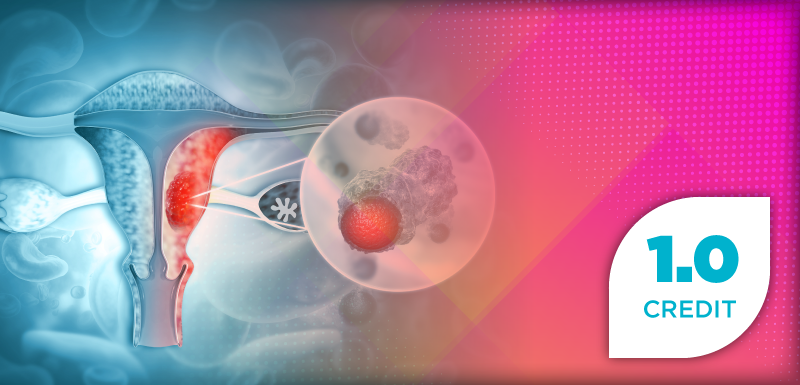
ACOG Releases New Pain Management Recommendations for IUD Insertions
Key Takeaways
- ACOG guidelines recommend local anesthetics for IUD insertions to address pain and anxiety, emphasizing individualized and culturally competent counseling.
- Recent CDC guidelines align with ACOG, advocating for patient-centered language and comprehensive pain counseling during gynecologic procedures.
The new guidelines urge health care professionals to offer local anesthetics and other medications for intrauterine device (IUD) insertions and other gynecologic procedures.
Updated guidelines from the American College of Obstetricians and Gynecologists (ACOG) recommend that health care professionals offer local anesthetics, such as lidocaine spray, lidocaine-prilocaine cream, or paracervical block, for intrauterine device (IUD) insertions. Additionally, for other procedures, options may vary but can include local anesthetics (eg, topical or injected anesthetics, nonsteroidal anti-inflammatory drugs [NSAIDs]) or other medications (eg, misoprostol).1
An IUD is a small, flexible device that is inserted into the uterus to prevent pregnancy, regulate menstrual cycles, and, in some cases, lessen endometriosis-related pain. These devices can be either hormonal or nonhormonal, and there are currently 6 FDA-approved IUDs in the US: copper devices, such as the copper T 380A (ParaGard; Teva) and Miudella (Sebela Pharmaceuticals), which is the first hormone-free copper IUD to be FDA-approved in over 40 years2; and hormonal levonorgestrel-releasing systems, such as Mirena (Bayer), Kyleena (Bayer), Liletta (Allergan), and Skyla (Bayer).3 Although IUDs have become a more popular method of birth control in women in recent years, many patients report significant pain or cramping as well as anxiety during IUD insertion procedures. Advancements in this area have focused on the IUDs themselves and fail to acknowledge other aspects—notably pain and anxiety—that arise during the procedure.3
The updated ACOG guidelines are a response to the numerous reports from patients who experience extreme pain and anxiety during IUD insertions. Additionally, this anxiety can present barriers to patients when accessing needed or beneficial care. These importantly recommend that obstetrician-gynecologists (OBGYNs) and health care professionals discuss and offer pain management options to every patient who is seeking an in-office gynecologic procedure, ensuring that pain management counseling is individualized, culturally competent, trauma-informed, and guided by shared decision-making.1
“The way that pain is managed by health care professionals has been affected by a number of factors, including the fact that many of the pain management interventions had limited or conflicting evidence supporting their effectiveness. Additionally, systemic racism and bias as to how pain is experienced and who experiences it also have, unfortunately, influenced pain management considerations,” Christopher M. Zahn, MD, FACOG, chief of clinical practice and health equity and quality at ACOG, said in the news release. “This guidance is an important step toward both identifying evidence-based approaches to pain management and reducing those biases by offering all patients more autonomy in deciding how to best approach the pain they experience. What I hope clinicians will take away from this guidance is the absolute importance of comprehensive pain management counseling—not just for mitigating pain in the moment but also for improving trust with our patients and ensuring better access to gynecologic health care for every person.”1
These guidelines come after updated CDC recommendations made in August 2024 that encourage health care professionals to address women’s concerns about symptoms both during and after the procedure. Nationwide, patients report experiencing extreme pain, bleeding, vomiting, or blackouts because of an IUD insertion. Alongside health care professionals, women have used social media platforms—in particular, TikTok, Instagram, and X (formerly known as Twitter)—to raise awareness and suggest methods that can improve the quality of care for those receiving IUDs.
The CDC’s updated guidelines incorporated this feedback and evidence to enhance patient comfort and safety.3 Similar to the new ACOG guidelines, the CDC advised that patient-centered language is essential prior to and during insertion, placing an emphasis on the use of anesthetics in combination with comprehensive procedure and pain counseling. Additionally, the CDC provided guidance to manage bleeding irregularities that may occur both during and after the procedure.4
Further, previous studies, such as a 2025 study published in Epic Research3, show that only 536 per 10,000 IUD placements (5.36%) were accompanied by either a pain or anxiety medication administration that was documented on the same day. The investigators of this study observed that the most commonly documented medications were NSAIDs and opioids, which were administered at 321 and 318 per 10,000 IUD placements, respectively. Other less common medications included the following (per 10,000): benzodiazepines (n = 242); local anesthetic (n = 242); acetaminophen (n = 147); parenteral ketamine (n = 24); and topical anesthetic (n = 8). This study emphasized a need for more supportive measures for patients regarding pain and anxiety.3
“Though some clinicians have been able to offer some of these pain management options already, I am excited that this guidance will ensure more ob-gyns and clinicians are discussing pain management options with their patients, and, most importantly, that fewer people will have to endure pain to obtain procedures that are necessary for their health and well-being,” Genevieve Hofmann, DNP, WHNP, coauthor of the guidance, said in the news release.1
Updates in guidelines, such as ACOG’s new recommendations and those from the CDC, help enhance practices by placing the patient at the center of care, which is essential in improving practices within gynecology and women’s health. Patients will feel more comfortable if their pain and anxiety are both validated and addressed properly.1,3,4
“…I know that for many patients who already experience pelvic pain in their daily lives, being presented with multiple options for pain management for gynecologic procedures is critical to improving their health care experience—especially for people whose pain has previously been dismissed. I’m also hopeful that my fellow scientists will continue to research more techniques for gynecologic procedure pain management, and that future research will be more racially and ethnically diverse and consider broader patient ages and those with history of trauma and pelvic pain, because all people deserve access to evidence-based care,” Kristin Riley, MD, FACOG, coauthor of the ACOG guidance, said.1
REFERENCES
American College of Obstetricians and Gynecologists (ACOG). ACOG Releases New Recommendations on Pain Management for IUD Insertions, Other In-Office Gynecologic Procedures. News release. May 15, 2025. Accessed May 16, 2025.
https://www.acog.org/news/news-releases/2025/05/acog-releases-new-recommendations-on-pain-management-for-iud-insertions-other-in-office-gynecologic-procedures McGovern G. FDA Approves Miudella, First Hormone-Free, Copper IUD in Over 40 Years. Pharmacy Times. February 26, 2025. Accessed May 16, 2025.
https://www.pharmacytimes.com/view/fda-approves-miudella-first-hormone-free-copper-iud-in-over-40-years McGovern G. Pain or Anxiety Medication Prescription With IUD Insertion Procedures Are Proportionately Low, Studies Find. Pharmacy Times. January 31, 2025. Accessed May 16, 2025.
https://www.pharmacytimes.com/view/pain-or-anxiety-medication-prescription-with-iud-insertion-procedures-are-proportionately-low-studies-find Gerlach A. CDC Recommends Use of Lidocaine for IUD Insertion in Updated Guidelines. Pharmacy Times. August 16, 2024. Accessed May 16, 2025.
https://www.pharmacytimes.com/view/cdc-recommends-use-of-lidocaine-for-iud-insertion-in-updated-guidelines
Newsletter
Stay informed on drug updates, treatment guidelines, and pharmacy practice trends—subscribe to Pharmacy Times for weekly clinical insights.














































































































































































































